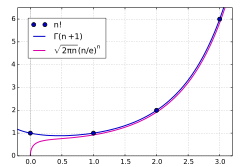Arts and entertainment
- Gothic art in the mid-12th century. [3]
- Ars nova : a musical style which flourished in the Kingdom of France and its surroundings during the Late Middle Ages.
- Oboe, or hautbois, in the mid-17th century France, probably by Jacques-Martin Hotteterre and his family or by the Philidor family. [4] Variants of the oboe like the graïle, the bombard and the piston were later created in Languedoc and Brittany.

- Many bagpipes were developed in France, [5] [6] including the Biniou, the bodega, the Boha, the Bousine, the Cabrette, the Chabrette, the Cornemuse du Centre, the loure, the Musette bechonnet, the Musette bressane and the Musette de cour.
- First mechanical metronome by Étienne Loulié in 1696 (but the modern form of the metronome was patented only in 1815 [7] ).
- Rococo in the early 18th century. [8]
- Clavecin électrique, earliest surviving electric-powered musical instrument, in 1759 by Jean-Baptiste Thillaie Delaborde [9]
- Roulette was developed in 18th century France [10] from a primitive form created by Blaise Pascal (17th century). [11] In 1843, Louis and François Blanc introduced the single 0 style roulette wheel.
- Many other gambling games and card games (including the French suits around 1480) [12] were invented in France, some from earlier games :
- From earlier Italian games : Basset, Biribi and Tarot (see Tarot of Marseilles and French tarot)
- From earlier Spanish games : Quinze and, maybe, Piquet
- Other : Faro (from the Basset), Brelan, Bouillotte, Commerce, Trente et Quarante, Belote and maybe Blackjack. [13]
- Photography:
- Photolithography and the first photographic image ever produced in 1822 by Nicéphore Niépce (Saône-et-Loire) [14]
- Daguerreotype by Nicéphore Niépce and Louis Daguerre
- Hércules Florence coined the term photographie in 1834, the origin of the English word photography. [15]

- Fairground organ by Joseph and Antoine Limonaire and Giacomo Gavioli. [16] [17] [18] [19] [20] [21] [22]
- Collotype process by Alphonse Poitevin in 1856. [23]
- Beaux-Arts architecture: a 19th century architectural style drawing upon principles of French neoclassicism, and taking inspiration from the baroque and rococo styles.
- Impressionism: a 19th-century art movement originating with Parisian artists.
- Vaudeville: a theatrical genre of variety entertainment born in France at the end of the 19th century.
- The praxinoscope of Charles-Émile Reynaud (1877) is an animation device intermediary between the zoetrope and film.
- Bal-musette: a style of French instrumental music and dance that first became popular in Paris in the 1880s. Although it began with bagpipes as the main instrument, this instrument was replaced with accordion, on which a variety of waltzes, polkas, and other dance styles were played for dances.
- Cabaret by Rodolphe Salis in 1881 in Paris. [24]
- Chronophotography by Étienne-Jules Marey (co-developed with Eadweard Muybridge, Albert Londe, Georges Demeny and Ottomar Anschutz) in 1882 in Paris. [25]
- Ambient music: as an early 20th-century French composer, Erik Satie used such Dadaist-inspired explorations to create an early form of ambient/background music that he labeled "furniture music" (Musique d'ameublement). This he described as being the sort of music that could be played during a dinner to create a background atmosphere for that activity, rather than serving as the focus of attention.
- Cinema, developed from chronophotography:
- First motion picture camera and first projector by Louis Le Prince, Frenchman who worked in the United Kingdom and the United States. [26] [27] [28]
- The cinematograph by Léon Bouly (1892).
- First commercial, public screening of cinematographic films by Auguste and Louis Lumière in Paris on 28 December 1895. [29]
- Georges Méliès: first filmmaker to use the stop trick, or substitution, multiple exposures, time-lapse photography, dissolves, and hand-painted color in his films. His most famous film, A Trip to the Moon (Le voyage dans la Lune), in 1902, was the first science fiction film and the most popular movie of its time (another of his productions, Le Manoir du diable is also sometimes considered the first horror movie). [30]
- Impressionist music: developed during the late 19th century by French composers, such as Claude Debussy and Maurice Ravel.
- Developments of the modern piano (invented by the Italian Bartolomeo Cristofori) : Pleyel et Cie (double piano), Sébastien Érard (double escapement action), Jean-Louis Boisselot (sostenuto pedal), Henri Fourneaux (Player piano). [31]
- Fauvism: a style of art pioneered by early 20th-century French modern artists whose works emphasized painterly qualities and strong color over the representational or realistic values retained by Impressionism.
- Ondes Martenot in 1928 by Maurice Martenot (early electronic musical instrument ). [32]
- Gemmail in the 1930s by painter Jean Crotti. [33]
- Musique concrète: a type of music composition that utilizes recorded sounds as raw material developed by French composer Pierre Schaeffer beginning in the early 1940s.
- Sampling (music): sampling originated in the 1940s with musique concrète.
- Clavioline, an electronic keyboard instrument, by Constant Martin in 1947. [34]
- Etch A Sketch by André Cassagnes in the late 1950s. [35] [36] [37] [38]
- Yé-yé: a style of pop music that emerged in France.
- Cold wave: a music genre that emerged with French, as well as Belgian and Polish musicians in the late 1970s.
- DivX around 1998 by Jérôme Rota at Montpellier. [39]
- Synthwave: originated in France by producers such as David Grellier, Justice, and Kavinsky.
- Blackgaze: a fusion of black metal and shoegaze that traces its origins to the work of French musician Neige.















